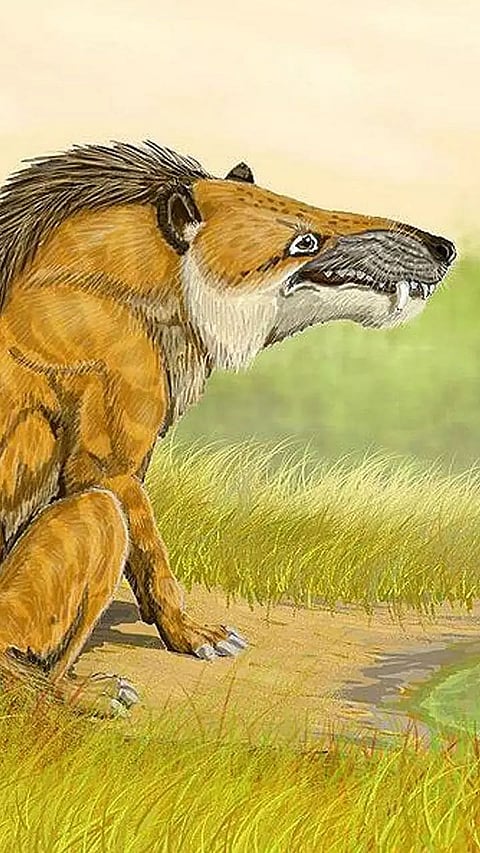Andrewsarchus
Measuring 13 feet from snout to tail and weighing at least half a ton, Andrewsarchus was the largest terrestrial meat-eating mammal that ever lived; its skull alone was two and a half feet long and studded with numerous sharp teeth.
Brontotherium
Unlike the other mammals on this list, Brontotherium ("thunder beast") was a confirmed herbivore. What made it so deadly was its sturdy nasal horn and two- to three-ton heft, which exceeds the bulk of any modern rhinoceros.
Entelodon
The Eocene epoch was a good time to be a giant, deadly mammal. In addition to Andrewsarchus and Brontotherium, there was also Entelodon, known as the "killer pig," a cow-sized animal equipped with a bulldog-like build and a dangerous set of canines
The Giant Short-Faced Bear
The cave bear (Ursus spelaeus) gets more attention, but the giant short-faced bear (Arctodus simus) was the more serious ursine menace of Pleistocene North America. This bear could run at 30 or 40 miles per hour, at least in short sprints, and could rear up to its full height of 12 or 13 feet to intimidate prey.
Leviathan
A 50-foot-long, 50-ton killer whale equipped with 12-inch teeth and a robust mammalian brain, Leviathan was almost on top of the Miocene food chain—its only rival being the 50-foot-long, 50-ton Megalodon, whose status as a prehistoric shark prevents it from being included on this list of mammals
Megantereon
Smilodon, also known as the saber-toothed tiger, is not part of this list. That's because the more menacing saber-toothed cat of the Pleistocene epoch was Megantereon, which was much smaller (only about four feet long and 100 pounds) but also much more agile, and probably capable of hunting in coordinated packs
Pachycrocuta
It seems that every mammal alive today had a bigger version during the Pleistocene epoch, a million or so years ago. The Pachycrocuta, for example, also known as the giant hyena, looked like a modern spotted hyena blown up to three times its normal size.
Paranthropus
Ancient mammals weren't only deadly by dint of their large sizes or extra-sharp teeth. Paranthropus, a close relative of the better-known human ancestor Australopithecus, was only equipped with a bigger brain and (presumably) faster reflexes.

